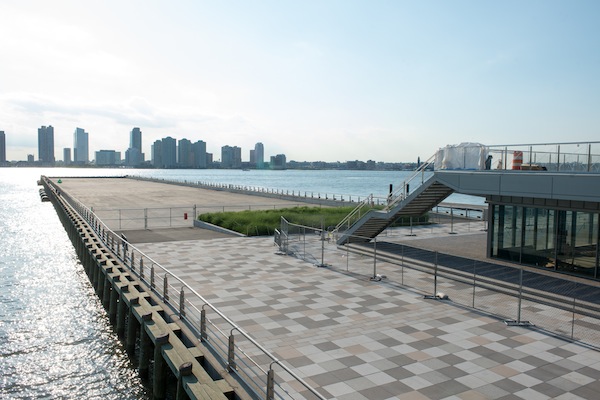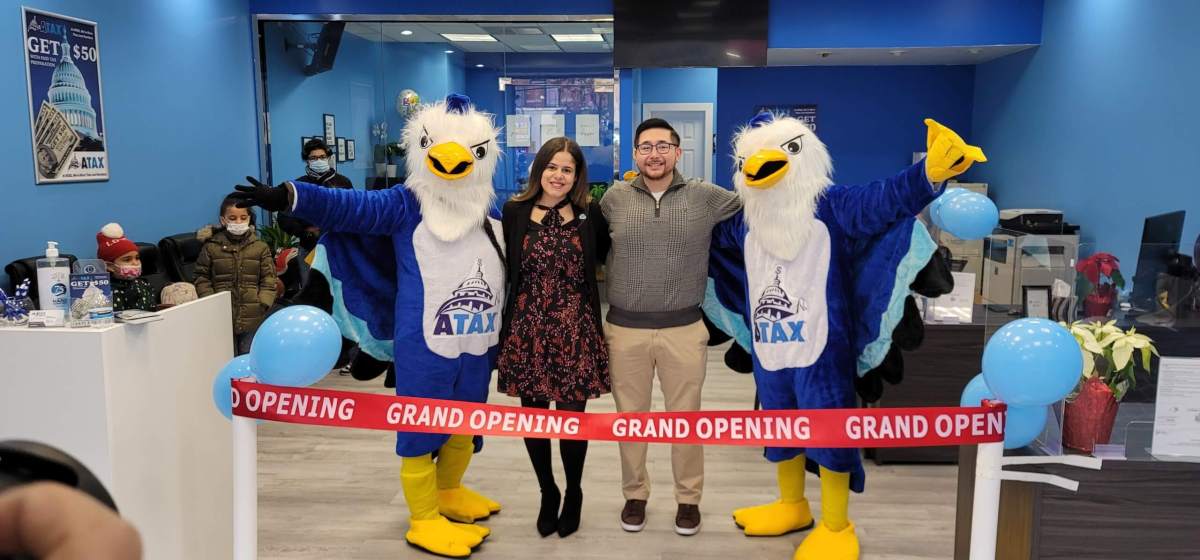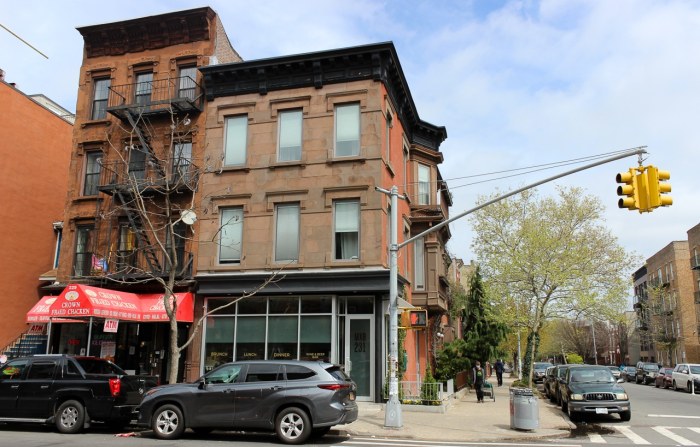
The Hudson River Park Trust has announced the consortium that will operate and run the “estuarium” — with upstate Clarkson University taking the lead.
Madelyn Wils, president and C.E.O. of the Trust, a state-city public authority, presented to Community Board 1’s Tribeca Committee on Wed., Jan. 14 and explained that the idea of having a research center has been around since the park was created, in 1998, and that it has been actively pursued for over ten years.
The Hudson River Park Pier 26 Estuarium will be located between N. Moore and Hubert Sts. in Tribeca, but construction looks to be a few years away.
“We very excited that the park after many years has been able to put together the funding as well as the partner to do what’s called the estuarium on Pier 26,” said Peter Braus, the committee chairperson. “It’s going to be a great resource for the people within C.B. 1.”
Clarkson University, located at Potsdam, New York, will lead the consortium and work with the New York Hall of Science and the Hudson River Sloop Clearwater.
Wils said that they were looking for institutions that could make the estuarium happen but not be a drain on the Trust’s resources. There was what is called a “request for expressions of interest” and Clarkson answered it with a very good proposal, said Wils, who said the Trust reached out to every university in the region that could have been interested.
Clarkson also has a math and engineering program, specializes in waterfront management, and said that they are willing to pay for the operations of the estuarium, she said.
“They have a sensible way of how they’re going to get there,” said Wils. “And they’re guaranteeing it. That is a very big deal that we know that just as they run their university, they’re going to be running their facility and it’s going to open.”
Nicolette Witcher, the Trust’s vice president of education and environment, said the underlying mission of the center is “to really promote and inspire and educate about the Hudson River environment. Our kind of pinnacle of that is to have a place where we can really focus the public’s attention on the river, on the estuary.”
Witcher described an estuary as “the special place in the river where the freshwater meets the saltwater and creates this brackish environment so it’s salty, but not too salty and it creates this really unique ecosystem.”
The center will take up about 12 percent of the pier and the Trust is “trying to figure out what the rest of it will be, but definitely a place for the public to enjoy,” said Witcher.
People will be able come in and learn about the estuary — park patrons, boaters and students on school field trips to name a few.
“There so much we need to learn about the Hudson River estuary,” said Witcher.
Scientists will be able to do real-time work, she said, and will be able to make connections upstate, downstate and in the harbor. The Hudson River estuary is 153 miles long and stretches from the New York Harbor to Troy, N.Y.
The Beacon Institute of Rivers and Estuaries is a research facility that is now a part of Clarkson University. The institute is located in Beacon, New York and, in 2008, it launched the River and Estuaries Observatory Network, which is a “sophisticated network of real-time acoustic and optical sensors that reflect nearly instant changes in important physical and chemical parameters within the Hudson River itself,” according to its website.
“We encouraged consortiums because, let’s face it, that’s what science is all about these days,” said Witcher.
Clarkson recognizes the need of working with local groups, she said, and is interested in other partners such as the River Project and the New York-New Jersey Harbor Estuary Program.
“We’re all having talks and I think everybody’s hopeful that it might work out that all these organizations can work in there together,” Cathy Drew, the executive director of the River Project, said in a phone interview.
The River Project, a marine field station, was at Pier 26 for about 25 years and is now temporarily located at Pier 40, said Drew, who is excited about the upcoming season that includes Wetlab Look-Ins.
“It’s just the beginning of the process, but we’re so excited that we have all these, I think, great players at the table now,” said Witcher. “I think everyone has a smile on their face so far. We have a lot of work to do.”
Witcher said that the Trust has increased its programming and around 25,000 people were educated about the environment this season.
Wils said that the estuarium will likely be two stories and about 10,000 sq. ft. and what it looks like will depend on the programming, classrooms, research space and exhibits. She also said the Trust would come back to the community board about the planning process.
There will be a “request for proposals” for a landscape architect later this year, said Wils.
The Trust has received funding from the Port Authority, the state Dept. of Environmental Conservation and New York’s Dept. of State, for a total of $9.5 million for the research center.
However, Wils explained that more funding was needed to finish the rest of the park.
“We are requesting money from our government parents to do that and we would like your support,” she said. “We can’t open the pier until the park is finished.”
The committee unanimously passed a resolution that supported the Trust’s efforts to finish the park and to encourage Clarkson to work with the River Project and other local groups that have been involved with educational programs on the river.
Wils, a Tribeca resident and former chairperson of C.B. 1, said that the park is the second largest waterfront park in the country and it is about 70 percent finished — with around 70,000 sq. ft. of park space that still needs to be built.
“We’re focused on working towards getting this park finished,” she said. “That’s really what we want to do and that’s what our intention is — so that every neighborhood in Hudson River Park has their park. Certain neighborhoods have their park built and other neighborhoods, like Tribeca, have half their park finished.”

















